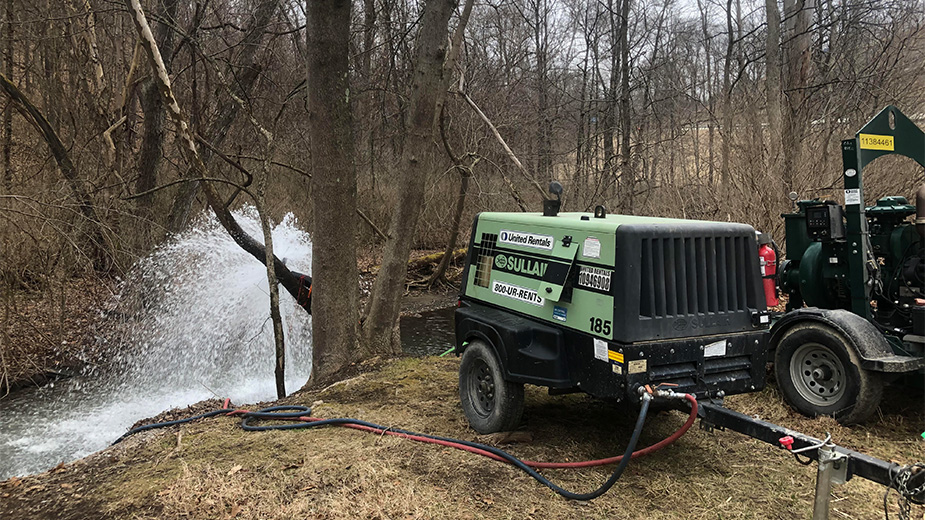ODNR: Derailment Killed More Than 40,000 Fish, Other Aquatic Life
EAST PALESTINE, Ohio – More than 40,000 fish and other aquatic life were killed by chemicals that spilled from the derailed Norfolk Southern train, according to the Ohio Department of Natural Resources.
Of that total, 38,322 were minnows, or small fish of between 1 and 3 inches, said Mary Mertz, ODNR director. Another 5,500 crayfish, larger fish, amphibians and macroinvertebrates were also killed by the chemicals.
The tally is an estimate based on a calculation endorsed by the American Fisheries Society, Mertz said. ODNR workers arrived at the number by testing the 5-mile stretch of waterway from the derailment site to where Bull Creek flows into the north fork of Little Beaver Creek.
The entirety of the fish and aquatic species kill is believed to have occurred in the first 24 hours after the derailment, Mertz said. Many of the dead creatures remain in the water.
There is no longer an immediate threat to minnows, fish or other aquatic species in the waterways near the derailment, Mertz said, noting that live fish have returned to Leslie Run.
None of the species killed are believed to be endangered or threatened, she said.
How It Was Done
The morning after the derailment, ODNR Division of Wildlife personnel attempted to survey the waterways but were advised by the state Environmental Protection Agency that it was too dangerous to enter the water without specialized gear and equipment.
In response, ODNR requested the help of an environmental consulting firm that was already on site working to contain the spill. Under the direction of the Division of Wildlife, EnviroScience, which had the appropriate equipment and protection, proceeded to use ODNR’s methodology to survey the waterways for dead aquatic species.
Procedures for fish kill investigations over a watershed are based on science. These scientific methods include the collection of data and specimens as soon as possible, which is what happened, Mertz said. Four collection stations were established to gather dead aquatic species.
Dead fish were collected in four designated survey spots by entering the water and using a net. Following collection, EnviroScience counted, identified, measured and arranged disposal of the aquatic species to limit impact to other wildlife that might feed on affected aquatic species.
This collection occurred on Feb. 6 and 7.
ODNR had previously reported approximately 3,500 dead aquatic species, consisting primarily of minnows and small fish, Mertz said. That estimate was based on visual observation of the species collected over the two-day period.
Once all of the actual data was collected from the various survey sites and the information was organized, that number was modified to a confirmed total of 2,938 aquatic species.
Of this sample, 2,200 (or around 75%) were 1- to 3-inch minnows. The other 25% included other small fish, crayfish, amphibians and macroinvertebrates.
After receiving that final sample number of collected dead aquatic species, ODNR wildlife investigators calculated the estimated total number of dead aquatic species, including those likely still in the water, and arrived at 38,322 minnows killed by the chemical spill, and 5,500 other species.
Impacted Area
The investigation has thus far concluded that of the 7½-mile impacted area, the species were killed over a 5-mile span. This area of impact runs from the train derailment site near Sulphur Run to where Bull Creek flows into the North Fork of Little Beaver Creek.
In the days that followed, officers searched beyond the impacted waterways, checking the Ohio River down through Jefferson County and at the Cumberland lock and dam. They did not observe any dead aquatic life.
Mertz stressed that these small fish are all believed to have been killed immediately after the derailment. Because the chemicals were contained, ODNR has not seen any additional signs of aquatic life suffering in the streams.
“In fact, we have seen live fish return to Leslie Run,” Mertz said.
The ODNR is awaiting test results of several nonaquatic animals, including three birds and an opossum.
“We do not believe any of these animals were made sick by the train derailment, but we have submitted those specimens to the Ohio Department of Agriculture and will wait for those test results before making that judgment,” she said.
Pictured at top: Aeration equipment was used in Leslie Run in East Palestine on Feb. 16.
Published by The Business Journal, Youngstown, Ohio.



